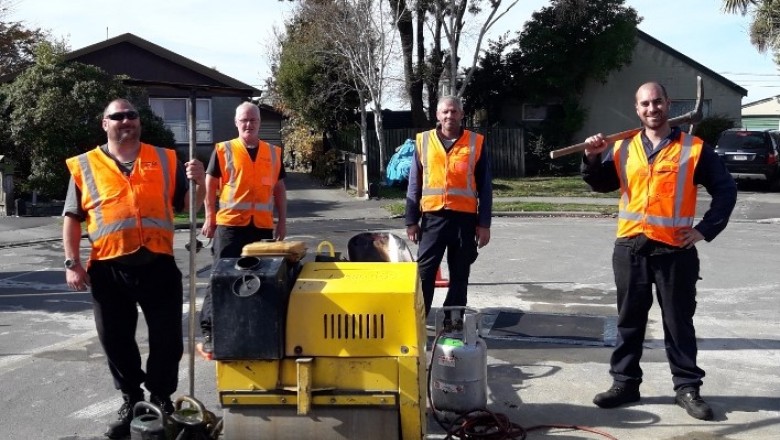Continuous road maintenance
Even with fewer vehicles on the roads, faults such as potholes still appear.
The Citycare road maintenance division has continued working throughout the COVID-19 pandemic, unwavering in its commitment to maintaining Christchurch’s northern roading and transport network.
In fact, with more people out walking and cycling around their neighbourhoods during the lockdown there has been an increase in customer service requests as residents report the need for repairs to roads, kerbing, signage and footpaths, Christchurch Contract Manager Mike Ison said.
One of the reasons for road maintenance being defined as an essential service during the lockdown period was to ensure that the roads were safe and accessible for essential services providers.
Consequently, road inspections, pothole repairs, make-safe/incident responses and taking care of public requests were all essential work and 11 specialist staff worked around the clock in an effort to keep connecting communities on safe roads during the pandemic, Mike said.
From its Milton Street depot, Citycare is responsible for maintaining the road network in the northern corridor of Christchurch, stretching from Bealey Avenue in the central city to Southshore, up to Brooklands and across to the airport and Avonhead.
A pothole is caused when the surface on the road breaks away and a depression appears.
Many are fixed within 24 hours, depending on the traffic volume on the affected road with the potholes crews starting each day collecting a load at Citycare asphalt plant in Springs Road, Christchurch.
Information on where faults are located is constantly updated.
Between the scheduled road inspections where every level of road is inspected on varying frequencies, covering the entire network within a two-month round, and residents’ reports to the Christchurch City Council customer service team, faults are continuously logged and repaired, Mike said.
Some faults are regarded as more serious than others and need to be attended to urgently – these are called make-safe or incident responses and can be anything from oil spills or debris to sinkholes.
Sinkholes are under the surface of the road, shown by a visible slump in the asphalt.
The empty space under a sinkhole can be deceptive – a couple of basketballs in size or even as large as a car, Mike said.
The crews have a set two-hour response time to get to the site of these incidents, make them safe and resolve the problem, he said.
Often the fault can be repaired quickly, but sometimes a more complicated fix is required over the following 24 hours or so.
The road maintenance fleet are custom-built vehicles with specialist equipment.
During the lockdown the two-person crews had extra face masks and gloves, sanitiser and disinfectant for their shared workplaces – the trucks and the roadside.
Mike is very proud of his teams working at the coalface in a job which is often taken for granted by residents, happening behind the scenes.
The team is focused on keeping the roads, pathways and pavements safe to use to help in connecting communities.

The pothole crew – Paul Woodcock, Cary Tomlinson, Gonzalo Frones and Wayne Nordstrom.

Paul Woodcock prepares a pothole for asphalt.
